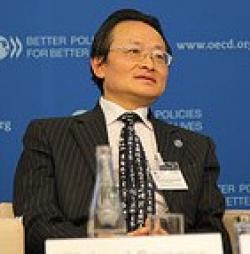All countries have been hit hard by the COVID-19 pandemic. Many countries have announced stimulus packages to recover their economies, and some have embraced the concept of a green recovery. According to the Global Recovery Observatory, however, only 21% of the total USD 2.25 trillions of the recovery spending announced to date by the world’s 50 largest economies is going into green investments.
The significant environmental and socio-economic benefits of green investments have been demonstrated long before COVID. In the context of the pandemic, it has once again been argued that rebalancing investments toward green projects would not only deliver on job creation but also have a greater multiplier effect on economic activity and help alleviate poverty. But the not-so-green global recovery makes us think that perhaps the availability of financing per se is not the dominant challenge at this time, and that our green economy engagement with decision-makers so far might have been only skin deep.
Although funding shortages due to emergency spending, high public debt and reduced tax revenues may constrain additional green fiscal stimulus, particularly for low- to middle-income countries, the issue at hand is the allocation of existing investment: stimulus packages lean heavily towards business-as-usual rather than green investments.
This may be due in part to the privileged access to decision-makers that the big polluters enjoy and the lack of transparency surrounding these relationships in many countries. For instance, in some countries environmental protections have been rolled back in the name of job creation and economic growth, and many carbon-intensive industries have successfully lobbied for cash transfers and government support with next to no environmental conditions attached.
Importantly, however, green projects receiving little fiscal support also reflects many countries’ weak institutions to translate green commitments into investment portfolios, especially when governments are under pressure to respond rapidly. In other words, the concept of a green economy has not yet taken root in many countries. Even where there has been political commitment, many key elements of the enabling environment such as clearly defined green investment criteria and options are still missing. Lacking readily available green investment alternatives, many governments have simply followed business as usual in a time when quick responses to an extreme crisis are needed.
Although innovative financing tools like green bonds and debt-for-nature swaps could help mobilize additional resources for green investments and offer triple-wins for debtors, creditors and ecosystems, they are not enough to bring transformative changes. There is a need to place the challenge of financing a green recovery in the context of institutions that are typically unprepared to plan, design, finance, implement and evaluate green projects.
There may be little we can do when the recovery investment train has left the station. But international development institutions can at least start drawing lessons and supporting institutional arrangements in partner countries. Specifically, three building blocks can be prioritized: 1) solidifying inter-ministerial decision-making mechanisms for large-scale investment planning; 2) assessing the most urgent national investment needs taking into account the importance of not only economic capital, but also natural and social capital, and addressing the challenge of financing in this context; 3) institutionalizing long-term education and training programs to equip young people with green skills and create a green economy committed civil service that can withstand changes of governments.
Rowan Palmer, Chengchen Qian, Alice Fanny Lea Jetin Duceux and Hongyi Yang (all UNEP) also contributed to this blog.


